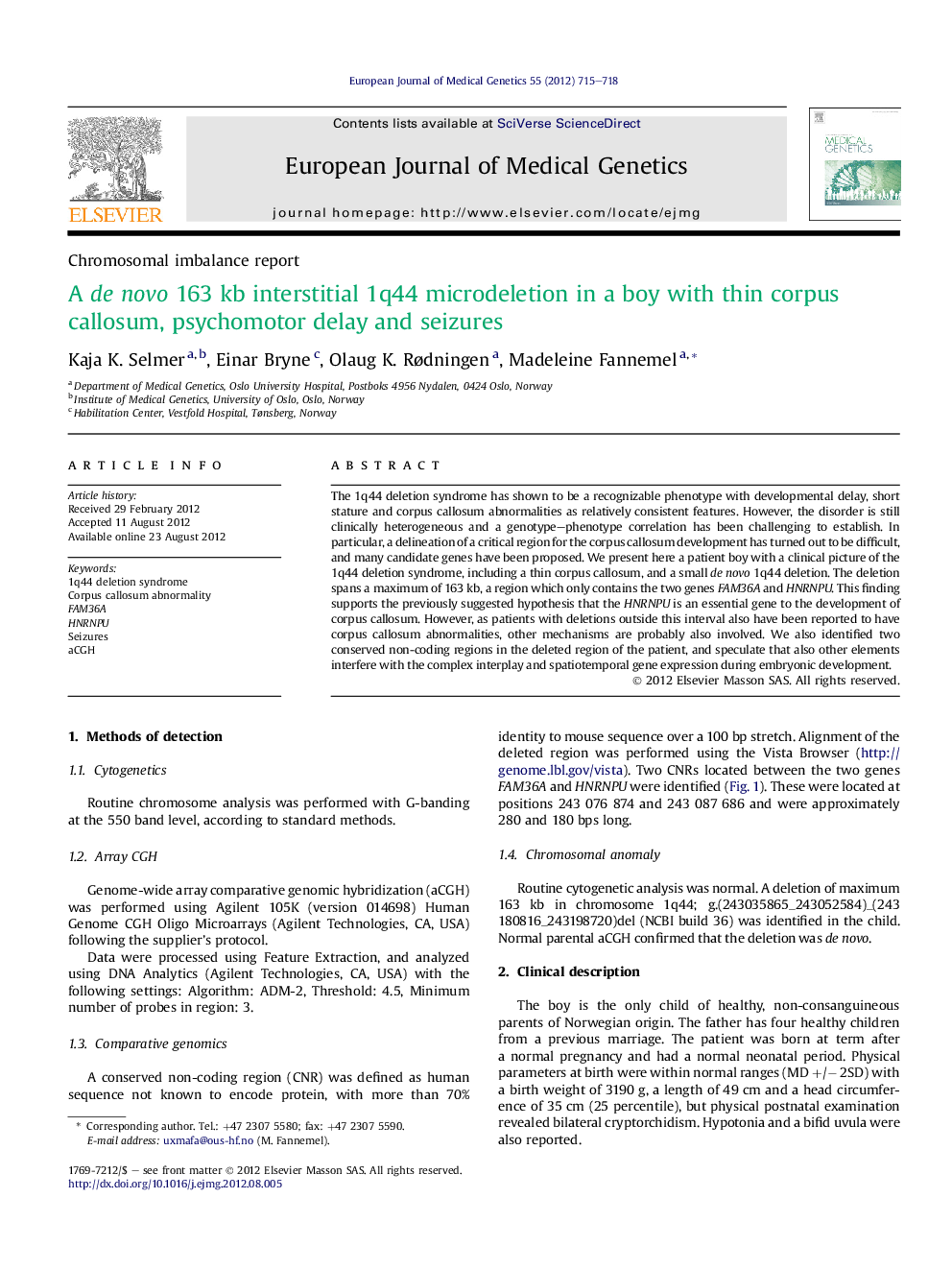| Article ID | Journal | Published Year | Pages | File Type |
|---|---|---|---|---|
| 2814014 | European Journal of Medical Genetics | 2012 | 4 Pages |
The 1q44 deletion syndrome has shown to be a recognizable phenotype with developmental delay, short stature and corpus callosum abnormalities as relatively consistent features. However, the disorder is still clinically heterogeneous and a genotype–phenotype correlation has been challenging to establish. In particular, a delineation of a critical region for the corpus callosum development has turned out to be difficult, and many candidate genes have been proposed. We present here a patient boy with a clinical picture of the 1q44 deletion syndrome, including a thin corpus callosum, and a small de novo 1q44 deletion. The deletion spans a maximum of 163 kb, a region which only contains the two genes FAM36A and HNRNPU. This finding supports the previously suggested hypothesis that the HNRNPU is an essential gene to the development of corpus callosum. However, as patients with deletions outside this interval also have been reported to have corpus callosum abnormalities, other mechanisms are probably also involved. We also identified two conserved non-coding regions in the deleted region of the patient, and speculate that also other elements interfere with the complex interplay and spatiotemporal gene expression during embryonic development.
► Smallest 1q44 deletion ever reported in patient with corpus callosum abnormality. ► Deletion includes only two genes: FAM36A and HNRNPU. ► Supports that HNRNPU is instrumental in normal corpus callosum development.
